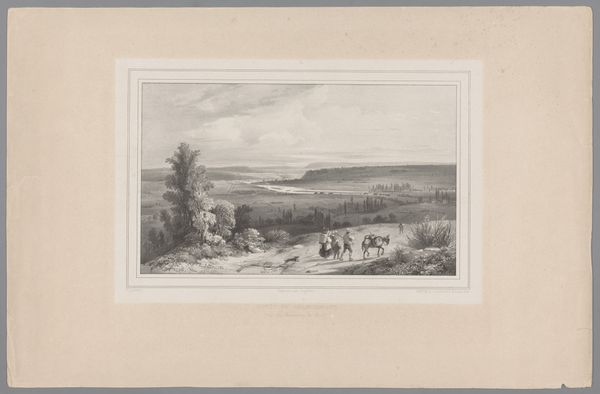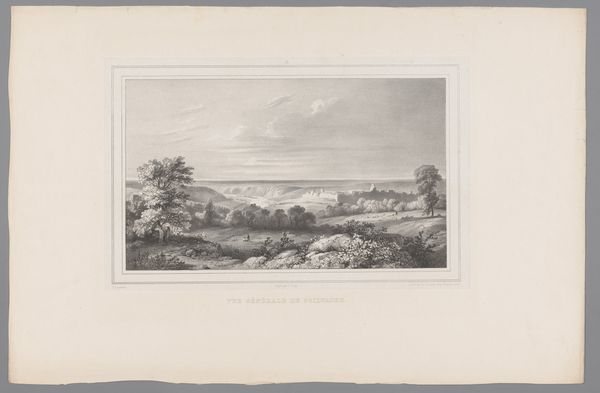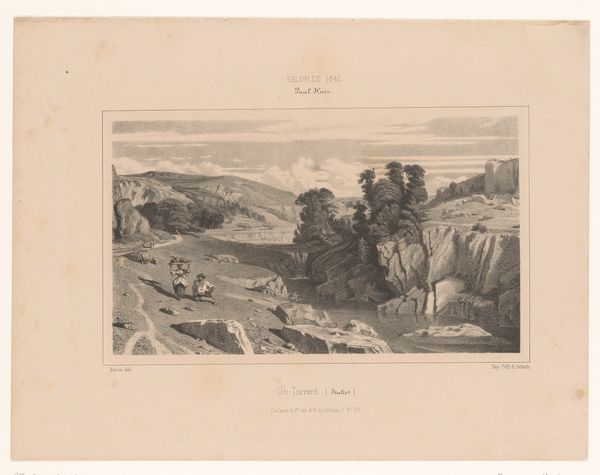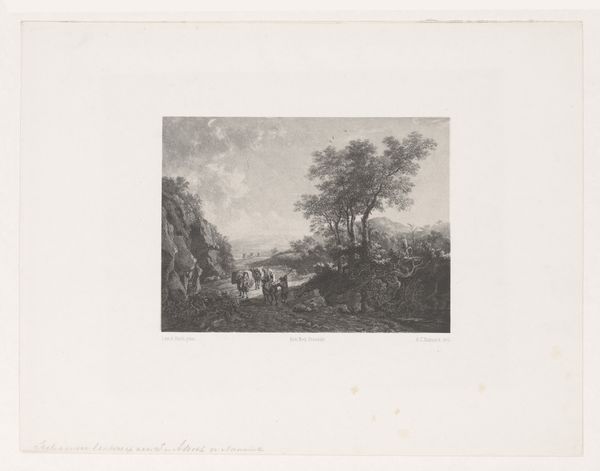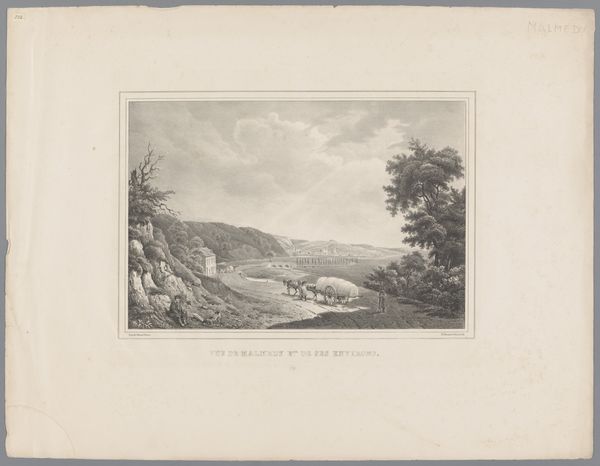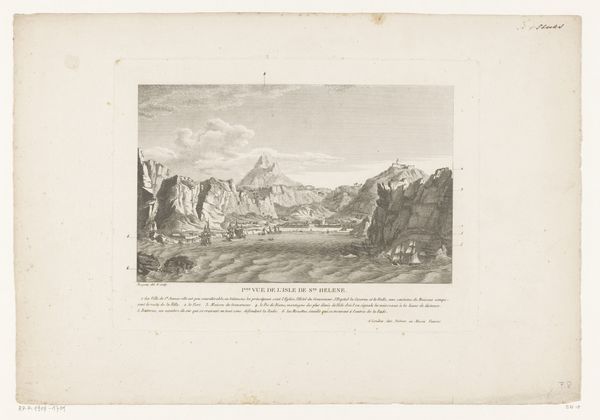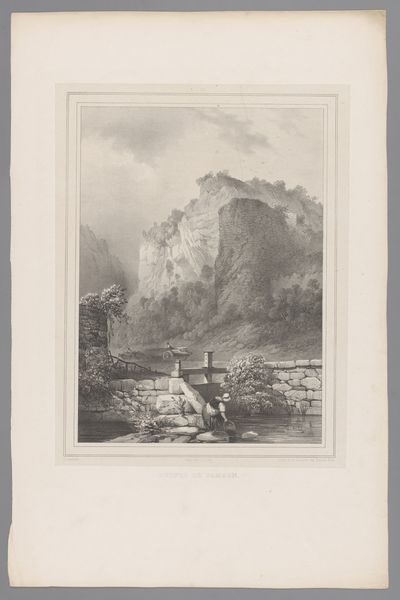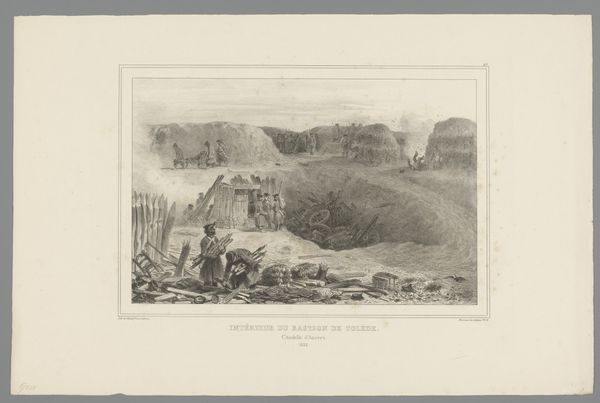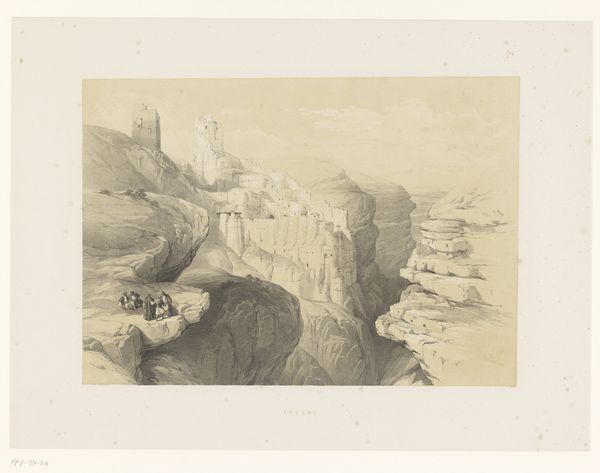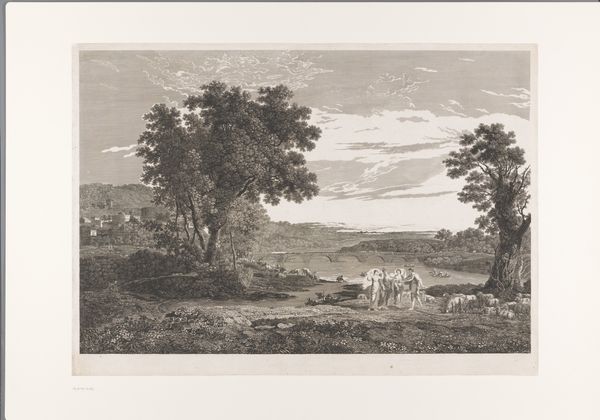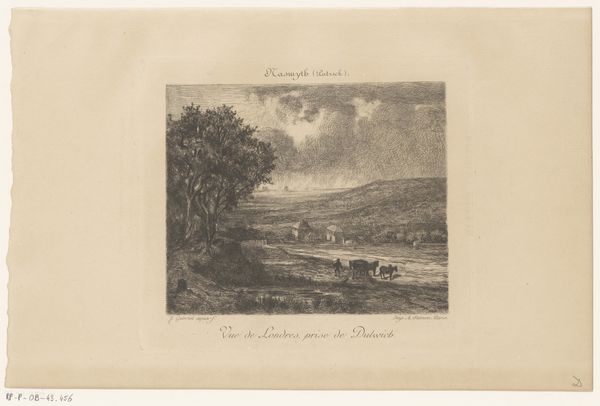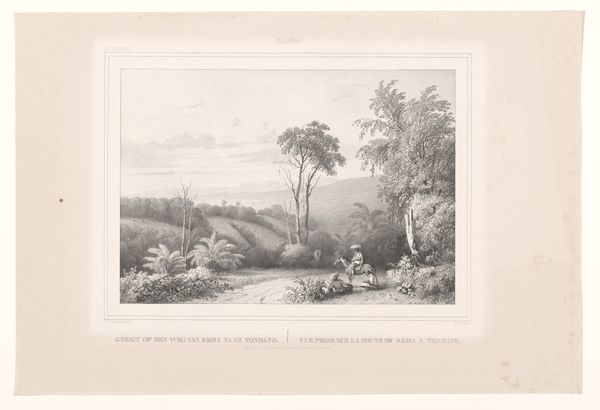
drawing, print, paper, engraving
#
drawing
# print
#
landscape
#
paper
#
romanticism
#
engraving
Dimensions: height 286 mm, width 432 mm
Copyright: Rijks Museum: Open Domain
Curator: Paulus Lauters’ "Landschap bij Saint-Hubert," created between 1836 and 1840, employs engraving on paper to render this scene. It is held in the collection of the Rijksmuseum. Editor: The scale gives me an immediate feeling of expansive openness, somewhat subdued. There’s a tranquility about the receding landscape punctuated by that craggy cliff-face and the almost spectral tree. Curator: The arrangement of forms leads the eye carefully. See how Lauters uses contrasting textures and linear elements to generate a visual cadence across the pictorial space. The bare tree against the layered horizon exemplifies Romanticism's formal preoccupations. Editor: The solitary tree definitely speaks of isolation and the sublime power of nature. Saint-Hubert itself is, of course, associated with Saint Hubertus, the patron saint of hunters, and the place is a center of forest and hunting traditions. Does the image allude to this veneration of the hunt, the connection of man and nature? Curator: Perhaps, but note how the image avoids overt symbols, turning instead toward compositional devices such as spatial recession and the triangulation of light and shade. I’m interested in how the horizon is subtly punctuated; Lauters uses variations in tone and contrast, to maintain tension. Editor: Still, there's an almost allegorical quality, isn’t there? The water may suggest purification, or passage, perhaps the reflection a mirror to the soul. These themes certainly were popular during the romantic era and it is difficult not to read into it when an almost ghostly looking landscape confronts us. Curator: While I cannot ignore potential interpretive connotations of purification or transition, my perspective urges me to approach through structure and form. What strikes me here is the delicate, nuanced engraving technique used, not to signify purification, but to define subtle shifts in tone that model atmospheric depth. Editor: Very good point; it’s compelling to think about how materials can invoke diverse emotional responses and that, even now, there are layers and layers that are only ever revealed by those kinds of perspectives. Curator: Yes, considering structure reveals the artist’s choices and offers fresh ways of interpreting this striking Romantic landscape.
Comments
No comments
Be the first to comment and join the conversation on the ultimate creative platform.

